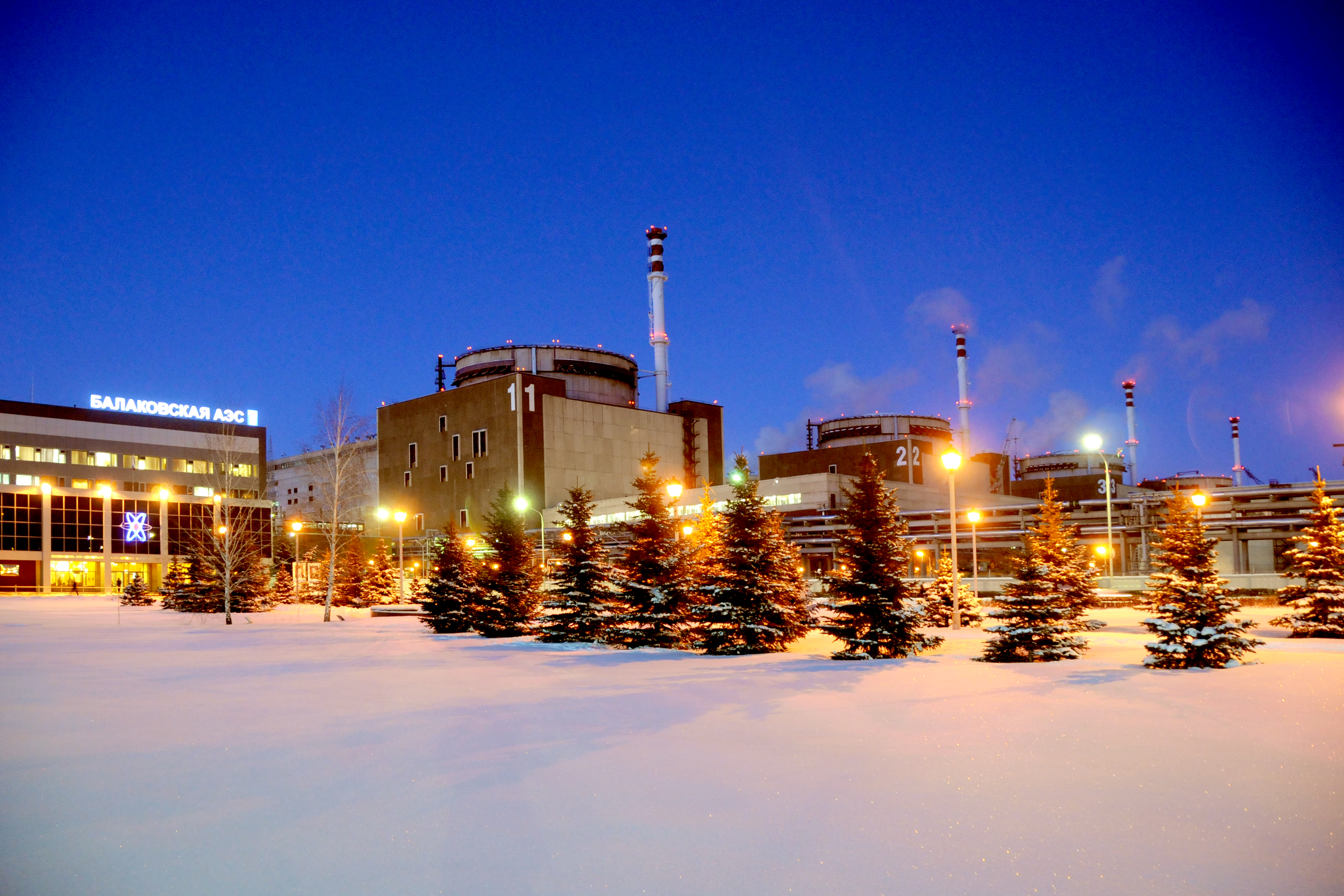
VVER
The water-water energetic reactor (WWER),[1] or VVER (from Russian: водо-водяной энергетический реактор; transliterates as vodo-vodyanoi enyergeticheskiy reaktor; water-water power reactor) is a series of pressurized water reactor designs originally developed in the Soviet Union, and now Russia, by OKB Gidropress.[2] The idea of such a reactor was proposed at the Kurchatov Institute by Savely Moiseevich Feinberg. VVER were originally developed before the 1970s, and have been continually updated. As a result, the name VVER is associated with a wide variety of reactor designs spanning from generation I reactors to modern generation III+ reactor designs. Power output ranges from 70 to 1300 MWe, with designs of up to 1700 MWe in development.[3][4] The first prototype VVER-210 was built at the Novovoronezh Nuclear Power Plant.
VVER reactor class
VVER (Voda Voda Energo Reactor)
VVER-210
VVER-365
VVER-440
VVER-1000
VVER-1200
VVER-TOI
Solid
Control rods
Water
Liquid (light water)
Generation of electricity
VVER-210: 760 MWth
VVER-365: 1,325 MWth
VVER-440: 1,375 MWth
VVER-1000: 3,000 MWth
VVER-1200: 3,212 MWth
VVER-TOI: 3,300 MWth
VVER-210: 210 MWel
VVER-365: 365 MWel
VVER-440: 440 MWel
VVER-1000: 1,000 MWel
VVER-1200: 1,200 MWel
VVER-TOI: 1,300 MWel
VVER power stations have mostly been installed in Russia, but also in Ukraine, Belarus, Armenia, China, the Czech Republic, Finland, Hungary, Slovakia, Bulgaria, India and Iran. Countries that are planning to introduce VVER reactors include Bangladesh, Egypt, Jordan, and Turkey. Germany shut down its VVER reactors in 1989-90,[5] and cancelled those under construction.
History[edit]
The earliest VVERs were built before 1970. The VVER-440 Model V230 was the most common design, delivering 440 MW of electrical power. The V230 employs six primary coolant loops each with a horizontal steam generator. A modified version of VVER-440, Model V213, was a product of the first nuclear safety standards adopted by Soviet designers. This model includes added emergency core cooling and auxiliary feedwater systems as well as upgraded accident localization systems.[6]
The larger VVER-1000 was developed after 1975 and is a four-loop system housed in a containment-type structure with a spray steam suppression system (Emergency Core Cooling System). VVER reactor designs have been elaborated to incorporate automatic control, passive safety and containment systems associated with Western generation III reactors.
The VVER-1200 is the version currently offered for construction, being an evolution of the VVER-1000 with increased power output to about 1200 MWe (gross) and providing additional passive safety features.[7]
In 2012, Rosatom stated that in the future it intended to certify the VVER with the British and U.S. regulatory authorities, though was unlikely to apply for a British licence before 2015.[8][9]
The construction of the first VVER-1300 (VVER-TOI) 1300 MWE unit was started in 2018.[4]
Versions[edit]
VVER-440[edit]
One of the earliest versions of the VVER-type, the VVER-440 manifested certain problems with its containment building design. As it was at the beginning with the models V-230 and older not constructed to resist the design basis large pipe break, the manufacturer added with the newer model V-213 a so called Bubble condenser tower, that – with its additional volume and a number of water layers – has the aim to suppress the forces of the rapidly escaping steam without the onset of a containment-leak. As a consequence, all member-countries with plants of design VVER-440 V-230 and older were forced by the politicians of the European Union to shut them down permanently. Because of this, Bohunice Nuclear Power Plant had to close two reactors and Kozloduy Nuclear Power Plant had to close four. Whereas in the case of the Greifswald Nuclear Power Plant, the German regulatory body had already taken the same decision in the wake of the fall of the Berlin Wall.